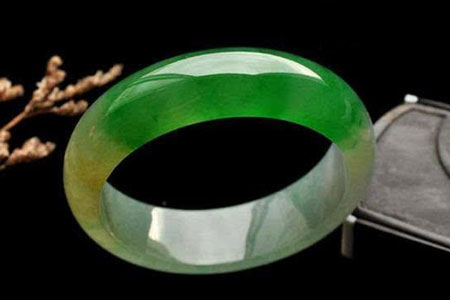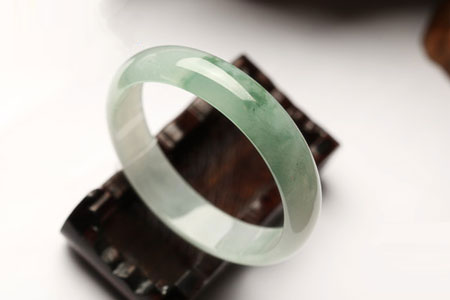Splitting refers to cracks. In the interior of the jade, the smaller crack is called "绺", and the larger and obvious "crack" outside the jade. On the bracelet, there is also a layer of meaning, "绺" refers to the congenital small crack in the formation of jade, mostly inside the jade; "crack" is the artificial crack caused by jade in the later processing, sales and collection process, outside the jade, You can feel the crack by swiping your fingernail. The following China Jewelry Merchants Network Xiaobian introduces everyone to the impact of the crack on the jade. The effect of splitting on the quality of jade Splitting has a great influence on the quality of jadeite. Especially for jadeite products, the existence of cleft palate sometimes seriously affects the beauty of jadeite. For example, a colorless jade pendant has a yellow cleft, which looks very awkward. , affecting the beauty of jade. The existence of cleft palate also has a great influence on the price of jadeite. In some jadeite products, there is no cleft palate, and the location of cleft palate is different, and the price will vary greatly. For example, the jade Guanyin is very taboo. There is a cleft palate in the face. If there is a cleft palate in the face of the Jade Goddess of Mercy, the price will be much lower, and even few consumers will buy it. The splitting in jade will also affect the firmness of jadeite, especially some large clefts. In the process of wearing jade, due to some bumps in life, it will lead to the expansion of jadeite, and if it is serious, it will make jade along the jade. The direction of the cleft is broken. Is there any crack in the jadeite B? Jade B goods are also chapped, and jade B goods are also made of natural jade pickling and filling, but in general, jade B goods are relatively difficult to see cleft under the naked eye, it is because jade is in After pickling and filling, the colored minerals in the cleft palate have been washed away, and then filled with organic glue, so the cleft palate is covered up. It is difficult for the average person to see with the naked eye, but the experienced person can still see it. The location of the cleft is colloidal. Splitting and clever carving application Emerald is a natural product, and inevitably there are some problems or defects, and the presence of mites or cracks is inevitable. In the engraving, as long as the crack does not pose a threat to the solidity of the entire jade jewelry, the engraver will generally avoid the crack when engraving. Generally, the shape will be engraved according to the shape of the ripple or the cracked pattern. Covering the smashing or cracking, the way to avoid smashing is to engrave the concave lines, so it is not easy to see the existence of the cleavage in our eyes. The treatment of smashing or cracking is a test of the patience and inspiration of a designer and engraver. Excellent designers and engravers can use the title to use the shackles or cracks just right, can turn decay into magic, and can think of others as " Scrap "The chopped jade material is fully utilized and carved into a jade boutique. Home textiles refer to the various types of fabrics and materials used in the home for functional and decorative purposes. These include bedding, curtains, towels, carpets, rugs, tablecloths, and other decorative fabrics used for upholstery, cushions, and wall hangings. Home Textile,Standard Textile Home,Home Furnishing Textiles,Home Decor Fabric Textiles changshu tokoh-tex trade co.,ltd , https://www.tokohtex.com

Bedding: Home textiles include various types of bedding such as sheets, pillowcases, comforters, duvets, bedspreads, and bed skirts. These are available in a wide range of materials such as cotton, silk, linen, and synthetic fabrics.
Curtains: Curtains are used for privacy, light control, and decoration. They are available in a variety of styles, colors, and materials such as cotton, silk, linen, and synthetic fabrics.
Towels: Towels are used for drying after a shower or bath, and for wiping hands and faces. They are available in a variety of sizes, colors, and materials such as cotton, microfiber, and bamboo.
Carpets and rugs: Carpets and rugs are used for adding warmth and comfort to a room, as well as for decoration. They are available in a variety of materials such as wool, silk, cotton, and synthetic fibers.
Tablecloths: Tablecloths are used for protecting the table from spills and scratches, as well as for decoration. They are available in a variety of materials such as cotton, linen, and synthetic fabrics.
Upholstery and cushions: Home textiles also include fabrics used for upholstery and cushions. These are available in a variety of materials such as cotton, silk, linen, and synthetic fabrics, and are used for adding comfort and decoration to furniture.
Wall hangings: Wall hangings such as tapestries, quilts, and other decorative fabrics are also considered home textiles. These are used for adding color and texture to walls, and for adding warmth and decoration to a room.